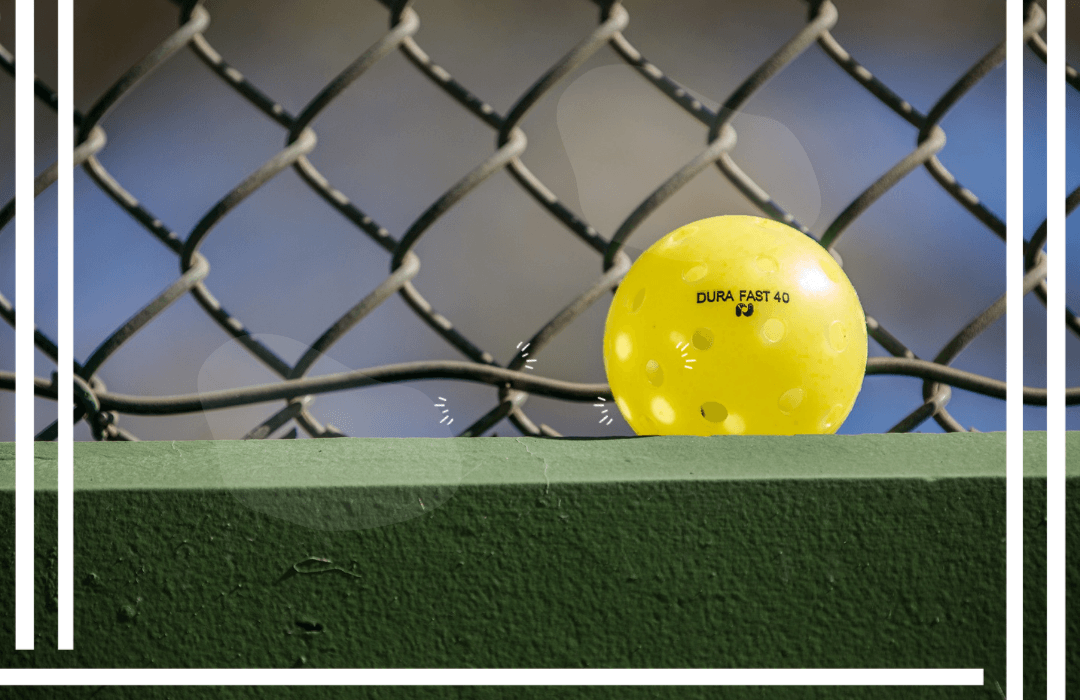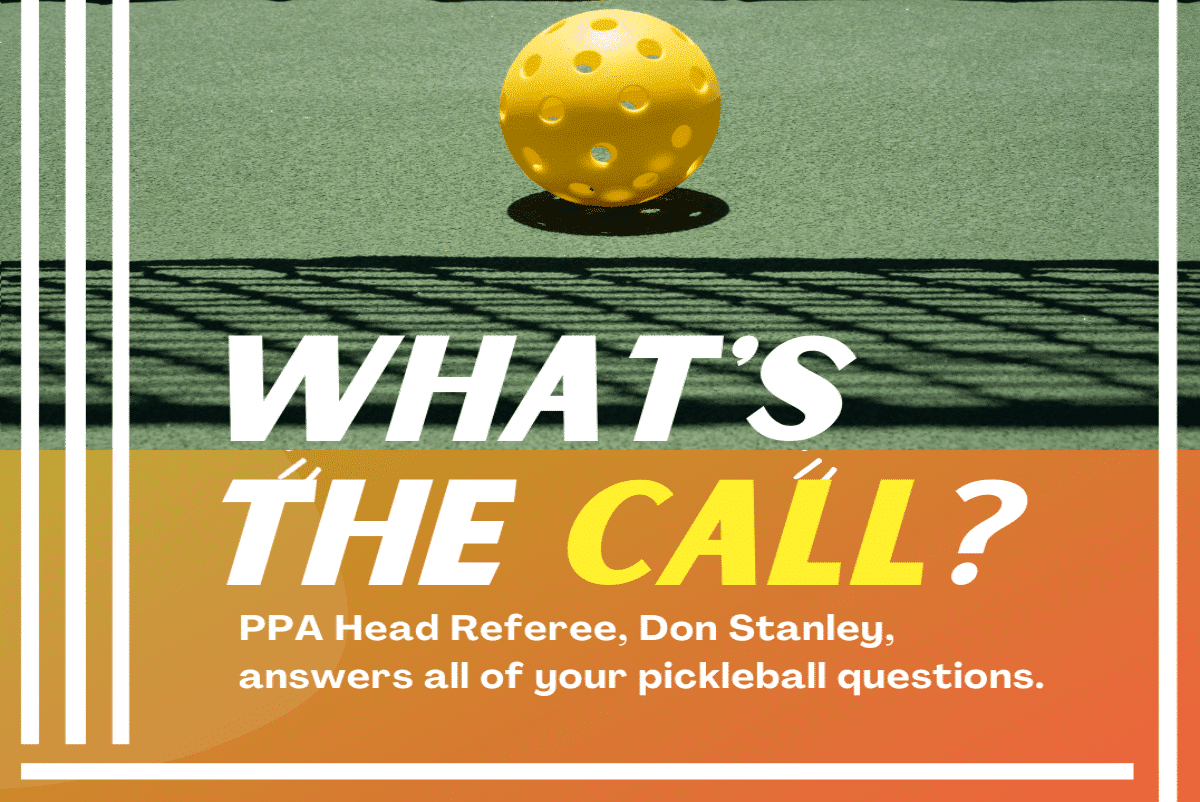“What’s the Call?” – January Edition
| July 11, 2023

Is Distracting Clothing Illegal in Pickleball?
I was playing 4.0 doubles in a local tournament a few weeks ago and came up against a couple of guys who were both outfitted in greenish-yellow outfits, almost exactly the color of the Franklin X40 pickleball that we were playing with. Not just t-shirts either; their shorts were also the exact same shade. Foreseeably, whenever their apparel became a backdrop for the ball during the point, my partner and I lost sight of the ball. This cost us precious seconds of anticipation during a great many of our points and created a lot of confusion during play. We appealed to a referee, but our opponents said they had nothing else to change into, so she allowed them to continue playing. Is wearing such distracting clothing legal?!
Mark, let me start off by quoting the applicable rule, and then we can look deeper. Rule 2.G.4: Violation: The Tournament Director has the authority to enforce apparel changes. If the player refuses to comply with the apparel rules, the Tournament Director (TD) may declare a forfeit of the match. So yes, the TD (not the referee) has the authority to have players change clothing, and your example is the first one that comes to mind as a reason that a TD might do so. Another reason would be for clothing that is “inappropriate” or offensive. A few thoughts: most tournament directors are required to state publicly which ball and ball color they will be using for their tournament. This should permit players the opportunity to choose appropriate clothing so this issue won’t arise. If a player truly did not have another shirt, perhaps they could purchase one from a vendor at the tournament, or perhaps, to avoid an argument, the Tournament Director could choose to give the player a new shirt. As you can see, there may be several “work arounds” for this problem, but according to the rulebook, a player can be required to change their clothing under certain circumstances. Hope that helps.
-Don
What is ‘Stacking’ in Doubles?
I don’t understand stacking in doubles at all. When can you do it? How does it work? Can you set up to play a point standing anywhere?! Why do players stack? Please explain, I’m so confused! Thank you!
-Mary Frederick, Boston, MS
Mary, wow, this question could entail writing a novel, but I will try to constrain my answer to a rules perspective. The best way I can describe stacking is this: if you and I are the serving team, then every time we serve, we would normally switch sides of the court on each serve. One time, I would be in the right court and the next time, I would be in the left court, and vice versa for you. Stacking simply allows you and I to always play on the same side of the court. In short, after the serve, I will always be playing in the left court, and you would be in the right court. To give a visual, let’s say I am serving from the right court, but I want to play the rest of the rally from the left court. I would line up to serve normally from the right court, but instead of you standing in the left court, you would position yourself to the right of me, possibly just to the right of the right-hand court. As soon as I serve the ball, I would “scoot over” to the left court and you would “scoot over” just a bit into the right court. This allows us to play the rally on whichever side of the court we prefer. One of the main reasons players stack is to keep their forehand strokes in the middle of the court. If you were right-handed and I were left-handed, we would both want our “power” forehand strokes to cover the middle of the court since this is where the highest percentage of balls are hit. With the ability to stack, we could always play from the same side of the court, thereby giving our forehand strokes the best chance to hit a winner. To help decrease the confusion involved in stacking, just remember this, at the start of the serve, only 2 people really matter; the proper server and the proper receiver. If you grasp who is supposed to serve and receive based on their scores, then you can forget about where their partner may choose to stand. I hope this helps, but I believe that if you start to practice stacking, it will come naturally just like most other aspects of pickleball. Hope that helps.
-Don
Can a hat cause a let?
During doubles rec play, we were playing a long, important point. I approached the net just as one of my opponents mis-hit the ball, making it fly high. I prepared to slap it down with an overhead. At the time, both opponents were about midcourt, in the midst of coming to the net. During my run forward, the wind knocked my cap off my head and it fell, hitting the ground as I hit the overhead. My opponent attempted to return my overhead but knocked it into the net, then immediately called a let on my cap because he said it distracted him. I feel like this wasn’t fair because I had an easy winner at the time. What’s the call?
-David Yuma, Ft. Worth, TX
David, this is a great question because it deals with one of the aspects of pickleball that forces a referee to discern and make a judgment call on the actions of players. If we first look at the definition of a distraction in the rulebook (Rule 3.A.6), the first part of the sentence reads, “Physical actions by a player that are not common to the game…” The rule goes on to dive into examples such as making loud noises, stomping your feet, waving your arms, etc. Admittedly, some forms of examples could be used in normal playing, but in extreme cases, they would be outside the norm. For example, why would a player be waving their arms back and forth over their head like they are trying to signal a boat to come and rescue them? That is definitely not “normal to the game.” Another component of a distraction is that it must occur when the opponent is about to make a play on the ball. It would be one thing for me to claim a distraction if you did something “not normal” when I was about to hit the ball, but if I claim you committed a distraction when the ball was still on your side of the net, that lessens the strength of my argument. As far as the wind knocking your hat off your head; this would not be considered a distraction because an outside force (the wind) caused your hat to fly off your head. Yes, it may have caught the attention of your opponent, but since you didn’t initiate any action to make this happen, you can’t be blamed because “it was a windy day.” With that said, let’s say you slung your head forward very sharply for no apparent reason right before your opponent was about to hit the ball. If your hat flies off your head with the absence of wind, this could possibly be judged to be a distraction since players don’t normally sling their heads sharply forward while standing at the NVZ. My point is that distractions are judgment calls made by the referee, and each situation can be slightly different. Hope this helps.


